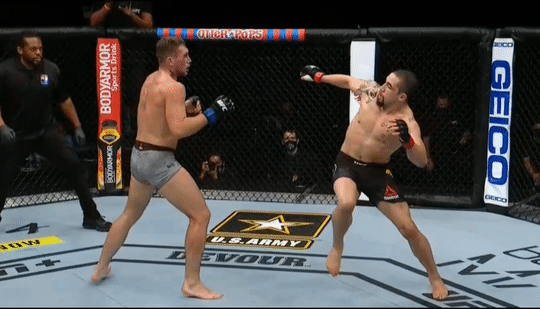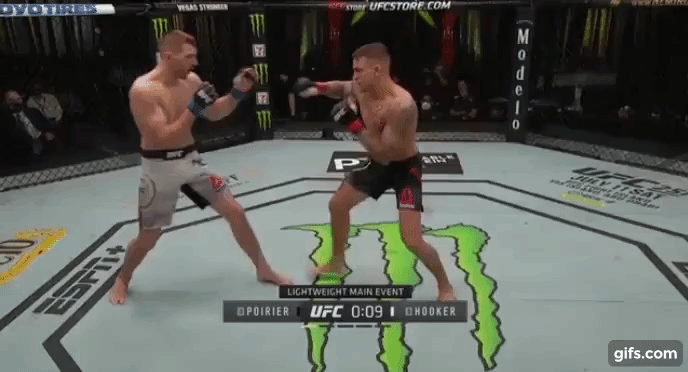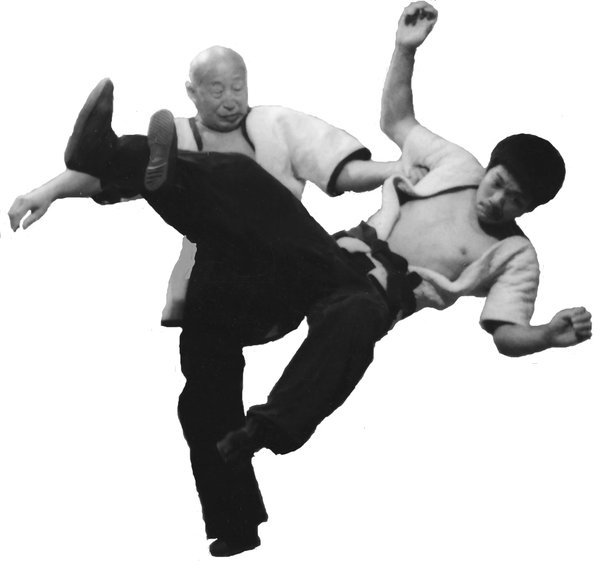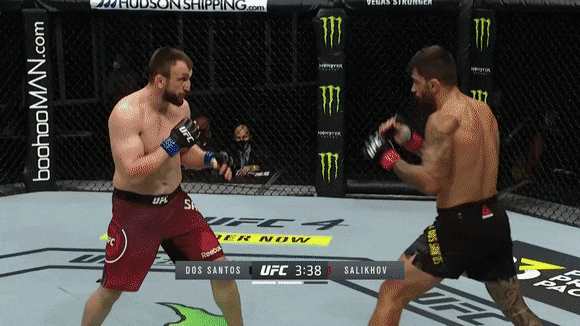I was watching Lawrence of Kenshin make a video about Kyokushin karate, and he basically said the reason Kyokushin wins against Muay Thai (Sometimes) and he heavily implied that it’s because Kyokushin and other Full contact karate styles basically integrated Muay Thai, and that’s why they start to win or perform well.
And there is some truth to this statement, Kyokushin became a vastly more powerful style after borrowing from Muay Thai.
The problem is that Lawrence and others imply that the only good things about Kyokushin are the the pieces from Muay Thai.
But the fact is there are things unique to Karate that Muay Thai does not have, things Kyokushin guys do with kicks and punches they do not.
Hell, the flow positive influence doesn’t go one way. Traditional martial arts have positively influenced western combat arts as well, and for the better.
Traditional martial arts influence punching, kicking, footwork and mechanics. I’ll try to cover as much as I can. But:
First we will look at kicking.

See that round kick Cyril Gane landed on Tai Tuivasa that folded him? That is not a Muay thai round kick, it was the ball of foot kick most often found in TKD and Karate styles.
Where the muay thai round kick is like an axe or baseball bat, the ball of foot kick is like a stab, a penetrative kick. By itself it can’t be spammed, but when mixed with Muay Thai style kicks, you can end up landing the ball of foot (or if you do Uechi-Ryu Toe kicks) to really get an exellent effect.
It’s especially good when mixing things up with front kicks or push kicks as well.
If you look at old Muay thai footage, not even from fifty years ago but even thirty years ago, they hardly ever throw kicks like that. It’s mostly teep, round, teep, round. Clinch.

Now as you can see from this gif, they are very very good at using that classic style of Muay thai round kick and teep. Classic old school muay thai is proof you don’t need twenty different kicks and punches to win, just a few tools you get very very good at using.
However that doesn’t mean it’s bad to learn more. Dutch Muay Thai is influenced by multiple striking styles including Kyokushin and Savate, and thus you see this showing up in Kickboxers across Europe. They often throw less elbows that traditional Muay Thai and clinch less, but they throw better hands and have more versatile kicks.

Not exactly the best street fighting technique, but here a thai boxer uses the signature Kyokushin Rolling thunder, using a TKD style tornado kick to set it up.
Another thing that has influenced Muay Thai even in Thai land is throwing back kicks, something you did not see in kickboxing or Muay Thai until full contact Karate strikers became popular again.
Another thing that Traditional arts influenced Muay thai and MMA with is spinning back and hook kick.


Gabriel Varga points out (Yes that Gabriel Varga) that you actually see more spinning back kicks and hook kicks/heel kicks than simple techniques like side kicks in Muay thai because you can throw spinning attacks from a square stance, while a side kick is more easily thrown from a side ways stance, as a side kick from a square stance is telegraphic.
Either way, it’s a big influence from the traditional styles.
But speaking of the side kick, it does not show up in Muay thai as much as it does in MMA.

Sure side kicks to the body show up lots like with Stephen Thompson and Michelle Waterson, but they are explicitly influenced by Karate.
The low side kick however shows up in guys that are not karateka.
Yes Muay thai technically has a low side kick as well, but it’s not emphasized in the system as much as a low round kick. This is more a TMA thing.

Jon Jones did not have any previous martial arts experience other than wrestling. Yes his striking utilizes lots of low side kicks. His original coaches Winklejon and Jackson both have traditional arts backgrounds.

Maybe it will one day get banned for how it can mess up knees. But it’s not exactly something that showed up in combat sports until the post Machida era.
You look at forms in kung-fu and Kata in karate, you see the everyday practice in Okinawa and China, and that low side kick is very present in those systems.
Now let’s look at traditional punching influencing Combat sports.

Steve Morris points out Karate combat guys are boxing and doing Muay thai, that’s why they can fight.
But it would be unfair not to notice…that punch there,is very very karate.
The way the fist leads non-telegraphically, the big emphasis on closing the distance is classic point karate, only this punch can hurt instead of playing tag which is most karate striking.
Muay thai punching doesn’t emphasize closing the distance. They sometimes do it with kicking, but most of it is focussed on pocket striking. Tae Kwon Do and karate use punches and kicks to close distance, especially karate or a kung-fu style like Baji.

You especially see this in MMA with shifting punches, something not often seen in Muay Thai or even boxing as much as there is less rewards to close distance and clinch for he take down.
It is however showing up in GLORY with kickboxers with karate backgrounds doing blitzs, shifting stance and footwork to overwhelm with a flurry. And it’s used in boxing, always has been. But karate does it more, and lately you see it influence MMA and kickboxing.

Of course punching is punching, and many striking systems and martial arts will use the same techniques.
But to close distance is an emphasis of many traditional arts, more than boxing, muay thai and kickboxing.
Footwork.



The bounce, the side ways stance. The in and out motions of these guys darting constantly is a game played by point fighting, common among traditional arts.
Granted, alot of kung-fu doesn’t do this(I’ll address Kung-fu more in detail at the end of this blog post) but most other traditional styles whether Pencak Silat, Japanese and Okinawan karate, Tae Kwon do. Kung-fu guys that do point sparring all essentially use the same kind of light foot work.
Yes boxing is bouncy too, but not with the deep stance, not bladed, and only very specific boxing styles use that whole in/out intercepting striking system.
I often will browse BJJ facebook groups, and they always rag on TKD and Karate, often rightfully so.
However when I post full contact karate and TKD, Sanda for the chinese or clips of a traditional stylist beating a western practitioners, they will often say “If this works why don’t we see it in the UFC” which is astounding ignorance coming from Combat Sport fans, especially not only with countless fighters explicitly trained and applying Karate and TKD, Sanda, but also non-traditional fighters using the tactics now integrated in overall MMA.
The worst comment I got was one guy saying “So what if GSP, Bas Rutten and others credit Karate and TKD. Tony Ferguson says he does Kung-fu and he clearly doesn’t” which is shockingly stupid, since these guys have far more corroboration than Tony Ferguson.
I realize then that they often are only literate in Buttscooting BJJ things, and often have no idea how to recognize stylistic or technical nuances in striking or even standing grappling.
What about Kung-Fu and Filipino martial arts?
I’m not going to bring up Tony Ferguson for Kung-fu.
As for Sanda and San Shou, many people treat it as if it’s not a kung-fu style.
The problem with Kung-fu is that it’s uniqueness is very subtle, it’s hard to actually point to examples of it helping practitioners because most of Kung-Fu’s strengths are very subtle, almost invisible mechanics.
Footwork in kung-fu for instance isn’t emphasized as movement, but rooting. People like Zhang Weili and others have done Chinese wrestling and martial arts, and often are stable, but it’s hard to point out how their sprawling and clinching is different than a wrestler without feeling it.
My karate does not manifest as most peoples does in combat sports. Like Machida and Thomspon I have been told my striking is non-telegraphic and I feint a lot like them. But I am not bouncy like they are, my stance is not side ways. I like to be very rooted, I like my stuff to be more like Kung-fu.
And it works for me, but people only realize I’m using my tai chi background when I slow things adown and explain it to them, or I sprawl or steal balance when punching. It’s not something I can show in a tape.
Also Kung-fu in a traditional format in combat sports doesn’t have much exposure yet. Lots of strikers cross train in TKD for specific focus on Kicking, thus it has exposure in Kickboxing and MMA. Lyoto Machida opened the door for “Karate boxers” as Jack Slack would put it, opened the door for Robert Whittaker and Stephen Thompson, with MMA gyms now bringing in olympic karate coaches to teach that in and out intercepting style.
Sanda and Shuio Jiao has brought Chinese martial artists into Kickboxing promotions and MMA, but traditional Kung-fu is on the decline, young Chinese are not interested in it compared to weird hippie foreigners who sniff disdainfully at Boxing, Kickboxing and MMA as barbaric and not ‘real martial arts’ as many Westerners interested in Kung-fu are wont to do.
TL;DR it’s not a failure of kung-fu that we don’t see it in the ring or cage, it’s because kung-fu/Chinese martial arts are subtle and under exposed.


Of course we have Zabit who’s last name I am not even going to try and spell. He’s a kung-fu practitioner, did forms and all.
He’s an excellent striker and grappler, and you see his flow of movement heavily influenced by Kung-fu.


The influence of Karate, TKD and Kung-fu in Kickboxing and especially MMA isn’t something that can be disputed.
Most hardcore fans of MMA respect karate in combat sports now, and TKD as well. Many are aware of Sanda and Shiuoi Jiao.
But I noticed this is mostly among hardcore MMA fans who follow the sport religiously.
Strangely I’ve met more ‘fans’ of the sport than actual fighters aware of the stuff I am writing about, many fighters are like ‘this is cool, I want to do MMA’ and don’t do further research than this, and spend their time training. While some hardcore fans don’t worry about training and want to study al the different nuances of fighting, so they learn the stylistic differences.
But the best MMA coaches and fighters I met are very devoted to the subtle differences and similarities of punching, kicking, grappling and especially movement. They want to know everything that is working at the highest levels, they want to see new ideas.
Unfortunately I noticed especially in the BJJ community, these guys want to think that MMA is still just learning some BJJ, some wrestling, some Muay thai and then you got the modern sport.
When in truth modern Kickboxing and MMA IS greatly inluenced by Western arts, Muay Thai and BJJ. But what sets it apart from Muay thai and pure BJJ is that it’s evolved past that, and now in the new evolution traditional arts are starting to give fighters an edge.
This is not controversial, nearly every popular MMA analyst essentially points out what I am, just in a more general manner, especially Weasle, Jack Slack, and George St. Pierre’s coach Firas Zahabi.
Yet somehow even among good martial artists is this perception everything good in MMA and striking all comes from only a handful of styles.
And it’s worth ending this blogpost off with saying: Only so many ways to punch, only so many ways to kick, off-balance, break limbs or choke.
The essential skills will be in any system that trains with resistance and devotion, the differences are often the emphasis of arts.